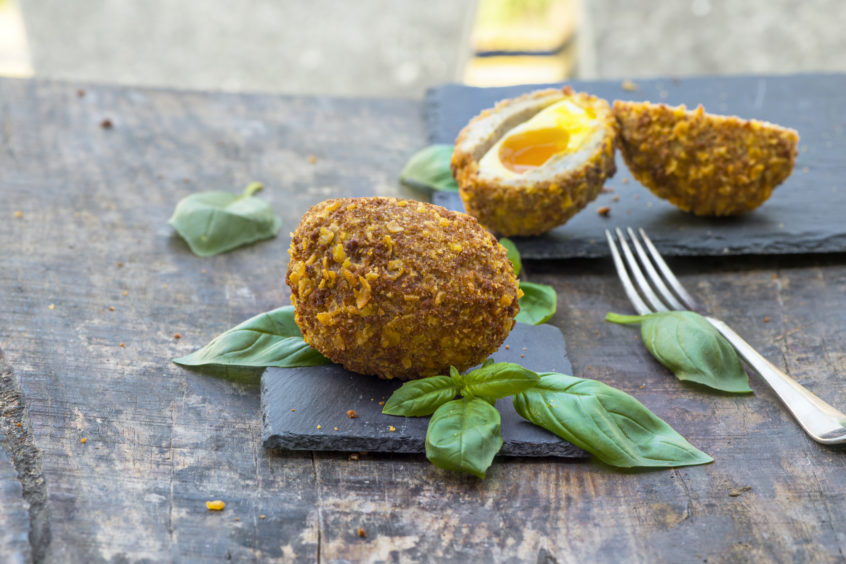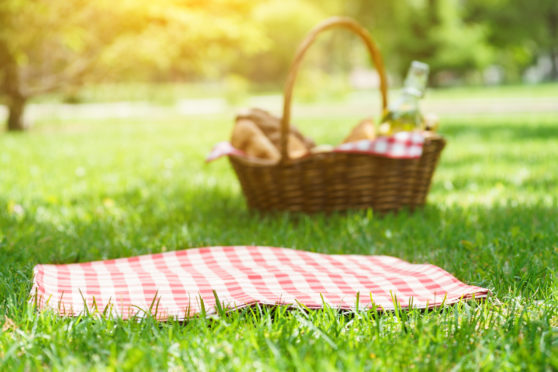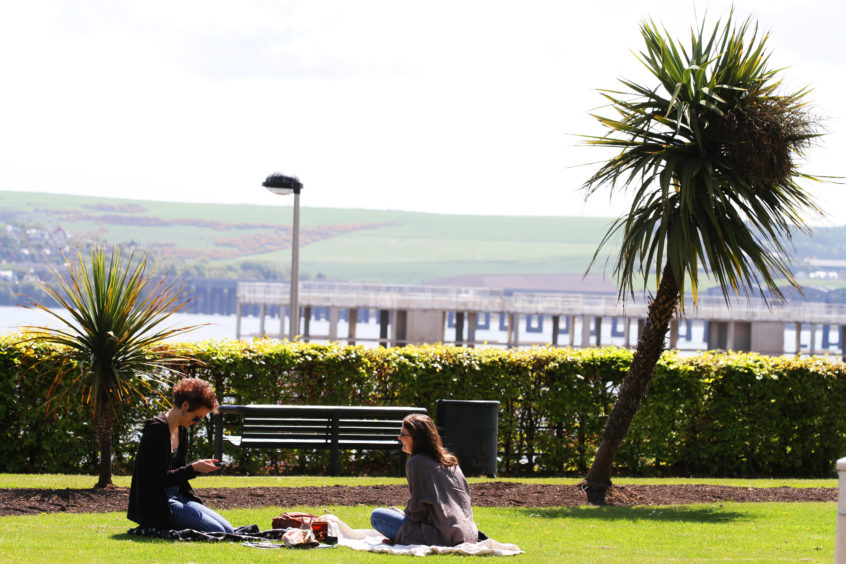As lockdown rules are relaxed and summer approaches, we take a look at the popularity and history of picnics, followed by some modern-day ideas for socially distanced al-fresco eating.
Writer W.Somerset Maughan once said, “there are few things so pleasant as a picnic eaten in perfect comfort” – and you only had to venture outside over the past few days to see that many Scots agree.
The humble picnic remains an ubiquitous part of summer and, as lockdown began to ease over the weekend, people of all ages headed to the country’s parks, beaches and nature reserves for some sun and al-fresco snacks.
Generally a low-key affair, a picnic is seen as wholesome fun for all the family, a low-cost activity accessible to most people.
But was it always this way, and where did the activity originate?
Outdoor meals date back to the Middle Ages, when hunting feasts were popular among the upper class. But the word picnic, originating from the French term “pique-nique”, loosely translating as “to graze on something small” didn’t come into common use until the 18th century when it became popular for members of the aristocracy to get together for nibbles and drinks.
Initially these get-togethers took place indoors in homes or hired rooms, with attendees bringing a dish or paying a share of the cost. There was often music, so a pique-nique was often just another word for a ball or party.
When much of the aristocracy fled to Britain after the French revolution, they introduced the pique-nique – or picnic as it began to be known in English – to this country. The get-togethers became so popular that a Pic Nic Society was founded, which involved around 200 wealthy young people holding raucous parties with food, drink, dancing and gambling in hired rooms in London.
In the 19th century picnics started to happen outdoors and were adopted by the emergent middle classes, becoming far more tame affairs with simple food and no music or dancing. The working classes soon began to hold picnics too, made possible by wider access to the countryside after the development of affordable travel by train. Picnics became so popular that specialist picnic baskets began to be produced and sold en masse.
Today picnics are much simpler compared to the feasts of the past that included roast beef and chicken, plum puddings, cheesecakes and drinks such as claret, sherry and brandy.
These days sandwiches, pies, cold salads, crisps and fizzy drinks are a lot more common. With the need for infection control now and in the foreseeable future, it’s a good idea to avoid sharing bowls, tear and share breads or jumbo-sized bags of food or dips that everyone reaches into, but to go for separate portions instead.
The following home-made picnic food recipes will come in handy as you can wrap and serve each item individually…
Salmon Scotch Eggs
 Ingredients
Ingredients
- 5 eggs
- 2 boneless and skinless salmon fillets
- 200g smoked salmon
- 1 lemon, zested
- a sprig of dill and parsley, finely chopped
- 50g plain flour
- a pinch of cayenne pepper
- 100g Panko bread crumbs
- 1tbsp frying oil
- 75g mayonnaise
Method
- Bring a pan of water to the boil. Once simmering, drop in four eggs and boil for six minutes. Get a bowl of cold water and once the eggs are done, immediately dunk them in. Once cool, carefully peel. Set aside.
- Blend the salmon, smoked salmon and lemon zest to form a paste, then stir through the herbs. Divide the mixture into four balls. Flatten a ball of paste in the palm of your hand and tease it around one of the eggs until completely covered. Repeat with the remaining eggs. Set aside.
- Get a tray and three shallow bowls. Put the flour in one bowl, stir in the cayenne pepper. Crack the remaining egg into another and whisk, then put the breadcrumbs in the final bowl. One by one, dip the Scotch eggs into the flour, egg and then the breadcrumbs. Set aside on the tray.
- Fill a heavy-bottomed pan two-thirds with oil and heat to 180C. Fry the Scotch eggs for five minutes until deep golden, drain on kitchen paper. Serve with the mayonnaise and some lemon wedges.
Picnic Pie
 Makes 2
Makes 2
Ingredients
- Butter for greasing
- 2 x 500g puff pastry
- 250g/120z sausage meat or skinned sausages such as pork and apple
- 2 sweet apples – peeled, cored and grated
- 2 onions, grated
- 2tbsp thyme leaves – optional
- 16 thick slices cooked ham, fat trimmed
- 4 tbsp Dijon mustard
- 2 eggs – beaten to glaze
Method
- Grease two 20cm/8in round deep baking tins. Heat oven to 190c/170c fan/gas 5.
- Line with the pastry leaving a good amount of excess hanging over.
- Cut circles for the tops.
- Mix sausage meat with the apples, onions and thyme. Divide into four portions.
- Line each pie with 4 slices of ham spread with the mustard.
- Top with the sausage meat and press down to level.
- Put lid pastry lids on and brush with egg. Fold the excess pastry over and press gently. Brush again with egg.
- Cut a steam hole in the centre and bake for 50 mins or until a skewer comes out. Leave to cool.
- Cut into individual pieces, wrap separately and serve cold.

